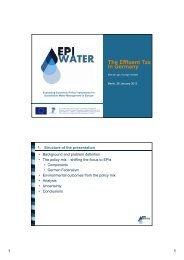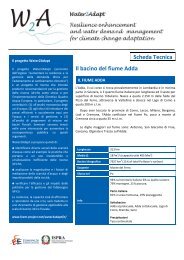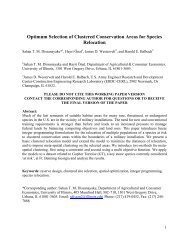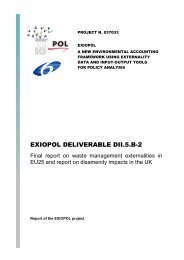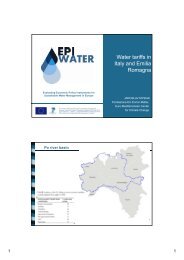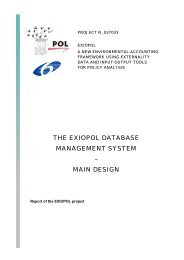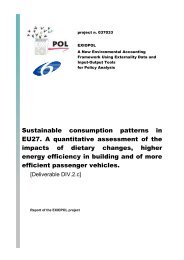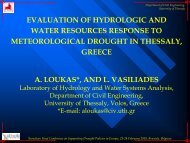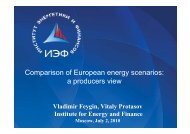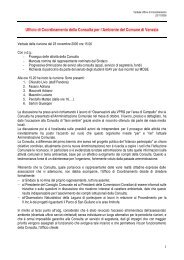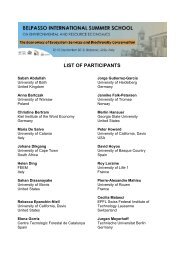Gulf and European Energy Supply Security - Feem-project.net
Gulf and European Energy Supply Security - Feem-project.net
Gulf and European Energy Supply Security - Feem-project.net
Create successful ePaper yourself
Turn your PDF publications into a flip-book with our unique Google optimized e-Paper software.
<strong>Energy</strong> <strong>Security</strong>: Potential for EU-GCC Cooperation<br />
Figure 14: International oil trade<br />
Source: POLES model, LEPII, SECURE <strong>project</strong><br />
22<br />
option is considered). Natural gas also brings<br />
flexibility <strong>and</strong> diversification of energy supply at the<br />
transformation or end-use level.<br />
One of the key issues with natural gas supply<br />
is that of the transport infrastructure that is highly<br />
investment intensive whether in the form of gas<br />
pipelines or in terms of LNG facilities at exporting<br />
or importing points. The POLES model allows the<br />
description, with a relatively high level of detail, of<br />
the conditions of supply of the different regions of<br />
the world. It takes into account the key variables<br />
that explain the development of gas transport<br />
infrastructure, with an explicit description of the<br />
main routes <strong>and</strong> of their costs. These routes are<br />
developed endogenously, as a function of each<br />
region’s dem<strong>and</strong>, supply <strong>and</strong> gas market price, of<br />
the state of the reserves of the suppliers <strong>and</strong> of the<br />
transports costs, pipelines or LNG chains.<br />
In the Muddling Through case, contrary to the<br />
oil situation, there is no peak gas before 2050, <strong>and</strong><br />
by that date world gas production is about twice<br />
that of 2000, with 4.8 Bcm (see Figure 15). The <strong>Gulf</strong><br />
<strong>and</strong> CIS regions will account for an increasing share<br />
of world production in the future, as <strong>European</strong><br />
<strong>and</strong> North American production decreases in<br />
absolute terms. In particular, gas production in the<br />
<strong>Gulf</strong> region increases from 0.4 Bcm in 2010 to 1.9<br />
Bcm in 2050. Again, the Europe Alone case does<br />
not introduce noticeable changes at the world<br />
level. Only in the Global Regime case is world gas<br />
production significantly impacted. However, there<br />
is still in that case, a significant increase in world gas<br />
production, from 3 Bcm in 2010 to 4 Bcm in 2050.<br />
The <strong>Gulf</strong> region <strong>and</strong> CIS are the main suppliers, with<br />
35 percent each of world gas production.<br />
Inter-regional trade in gas increases considerably<br />
in the Muddling Through scenario as shown in Figure<br />
16, from 0.2 Gtoe today to 1.5 Gtoe in 2050. These<br />
figures exclude intra-regional trade. The Middle East<br />
<strong>and</strong> the CIS are by far the largest exporters in 2050.<br />
The principal importing regions in 2050 are Asia,<br />
Europe <strong>and</strong>, to a lesser extent, North America; Africa<br />
is self-sufficient for its gas supply. The decrease of<br />
gas dem<strong>and</strong> in other scenarios is accompanied by<br />
reduction of the imports to 1 Gtoe in 2050 in Global<br />
Regime.




